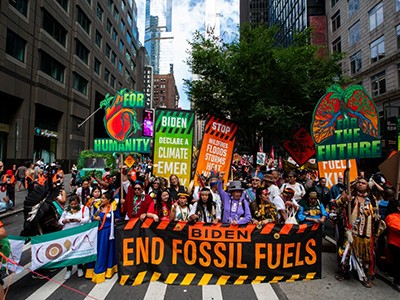[ad_1]
Limitarianism: The Case Against Extreme Wealth Ingrid Robeyns Allen Lane (2024)
As radical as they might seem, calls for limits on wealth are as old as civilization itself. The Hebrew Bible and Torah recognized years during which debts should be cancelled, slaves set free and property redistributed from rich to poor. In classical Greece, Aristotle praised cities that kept wealth inequality in check to enhance political stability. And in 1942, then-US president Franklin D. Roosevelt argued that annual incomes should be capped at the current equivalent of US$480,000.
In Limitarianism, Dutch and Belgian economist and philosopher Ingrid Robeyns argues that it’s time for twenty-first-century governments to do the same. She explores what setting limits on wealth ownership might mean, and why our societies should want to do so. It is a fresh take on a much-needed discussion at a time when, for example, the richest 1% of the US population owns about as much wealth as the bottom 90%.
Why the world cannot afford the rich
Robeyns, who has studied how people perceive wealth, opens with a provocative proposal — governments should set a wealth limit on the order of 10 million euros or US dollars per person. This figure, more of a guideline than a strict cut-off, “strikes a balance between what different moral and political considerations tell us is the maximum level” of wealth one should own, she explains.
Why cap wealth at €10 million? The author’s research across Europe suggests that this level, or an even lower “riches line”, would be broadly accepted by the population. Among a representative sample of Dutch people, for example, Robeyns and her team found that nine out of ten respondents agreed that having wealth exceeding €4 million for a family of four — in terms of ownership of certain assets, such as a mansion, a second home, luxury vehicles and a specific amount of savings — qualifies as being super-rich. In low-income countries, that threshold could be much lower.
Robeyns points out that extreme wealth “is often tied to immoral and criminal practices”. As evidence, she notes the massive use of tax evasion among ultra-wealthy people and their firms. Whether legal or not, she labels these practices as unethical. Going further, she reminds us that current wealth inequalities have some roots in historical practices such as slavery or military conquests — as scholars of global history have revealed, for example in Sven Beckert’s 2014 book Empire of Cotton.
To bolster her case and persuade detractors, Robeyns argues that limiting wealth accumulation would make societies better overall. Indeed, although individuals might disagree on whether market outcomes are fair, many would agree on the value of social-welfare objectives, such as having a healthy democratic system or offering equal opportunities for all.
Disproportionate power
As a growing literature in economics has shown, more wealth at the very top has often meant fewer resources to lift people at the bottom, contrary to the mantra of trickle-down economics. But wealth concentration isn’t just an issue that affects poor people, Robeyns argues — it is an issue for everyone. The discussion that follows is reminiscent of, and expands, the debate sparked by Richard Wilkinson and Kate Pickett’s 2009 book The Spirit Level.

Houses built over ravines in a low-income area near wealthy housing developments in Mexico City.Credit: Omar Torres/AFP/Getty
Over the past two decades, as Robeyns sets out, scholars have increasingly documented how democracy can be undermined by the disproportionate political power of media tycoons, rich founders of philanthropic organizations and large political-party donors. Extreme wealth concentration limits governments’ abilities to invest in public goods, such as education, health care and climate-change mitigation. And meritocratic promises are endangered when extreme wealth inequality is transmitted from one generation to the next.
Robeyns discusses policies that would constitute the essence of a limitarian policy platform, acknowledging that there is no one‑size-fits-all solution. Her proposals build on the work of Anthony Atkinson’s book Inequality (2015), Thomas Piketty’s A Brief History of Equality (2021) and Isabelle Ferreras and colleagues’ Democratize Work (2022). These include giving workers more rights over firms’ strategic decision-making and restoring governments’ fiscal agency by changing tax rules to limit the possibilities for tax evasion.
To build a better world, stop chasing economic growth
Introducing steep taxes on inheritance should also be high on the limitarian agenda. Robeyns suggests a limit of €200,000 on the total amount that can be inherited by an individual throughout their lifetime. The funds collected would be redistributed by the state to younger citizens so that everyone would “start their adult life without worrying unduly about how they will get by”.
Looming over all these discussions is the ecological crisis and what limitarianism means on a planet with finite resources. In a dedicated chapter, the author ponders: “There is so much good that money above the riches line could do, if only it were used for addressing collective problems,” such as climate change. Here, Robeyns argues that it would be politically and administratively easier to limit assets than to impose individual quotas to cap the appropriation of ecological resources, such as water or energy. Others might view the policies proposed by the author as equally difficult to introduce. The tough question of how to implement such limits in increasingly polarized and competitive electoral systems remains open.
Limitarianism is a thought-provoking read for all those interested in inequality. The French Declaration of the Rights of Man and of the Citizen, a founding text of political modernity in the eighteenth century, stated in its first article that: “Social distinctions may be based only on considerations of the common good.” As billionaire wealth increasingly defines our era, it is time to engage in public debates about the point at which wealth concentration ceases to serve the common good. A starting place for this discussion is to ask ourselves when enough is enough: is it €10 million, or more, or less? Robeyns’s original book sets out the proposals and logic to do just that.
Competing Interests
The author declares no competing interests.
[ad_2]
Source Article Link



